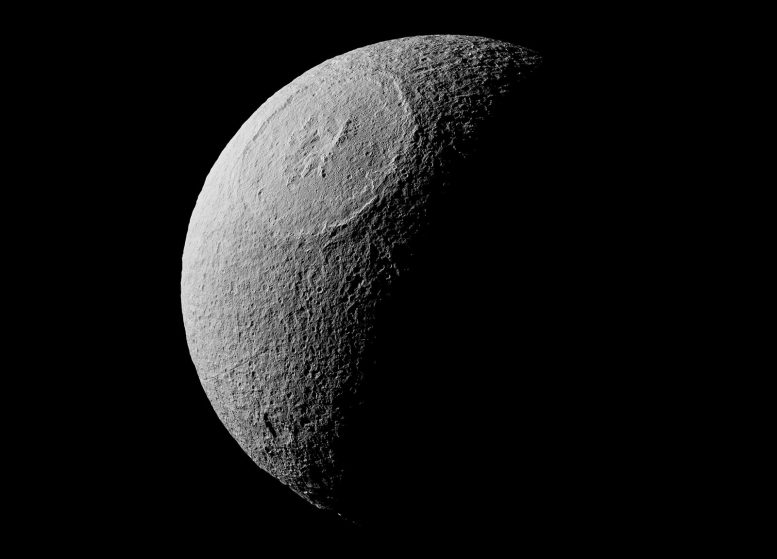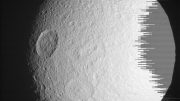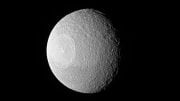
The 280-mile-wide (450-kilometer) Odysseus crater on Saturn’s ice moon Tethys, with its high cliffs and central mountains, was formed by a massive impact. Credit: NASA/JPL-Caltech/Space Science Institute
The most visually striking feature on Saturn’s icy moon Tethys is Odysseus crater. An enormous impact created the crater, which is about 280 miles (450 kilometers) across, with its ring of steep cliffs and the mountains that rise at its center. Odysseus is on the leading hemisphere of Tethys (1,071 kilometers, or 665 miles across). In this image, north on Tethys is up.
This view is a composite of several images taken in visible light with the Cassini spacecraft narrow-angle camera on August 17, 2015, at a distance of about 28,000 miles (44,500 kilometers) from Tethys.
The Cassini spacecraft ended its mission on September 15, 2017.
The Cassini mission is a cooperative project of NASA, ESA (the European Space Agency) and the Italian Space Agency. The Jet Propulsion Laboratory, a division of the California Institute of Technology in Pasadena, manages the mission for NASA’s Science Mission Directorate, Washington. The Cassini orbiter and its two onboard cameras were designed, developed and assembled at JPL. The imaging operations center is based at the Space Science Institute in Boulder, Colorado.









Be the first to comment on "Cassini Image of Odysseus Crater on Saturn’s Icy Moon Tethys"